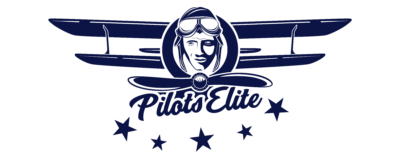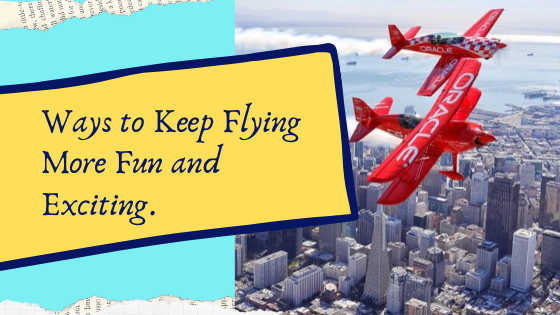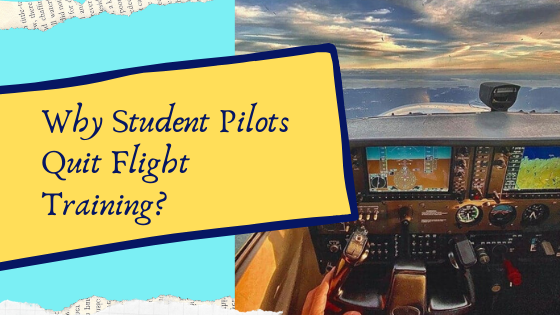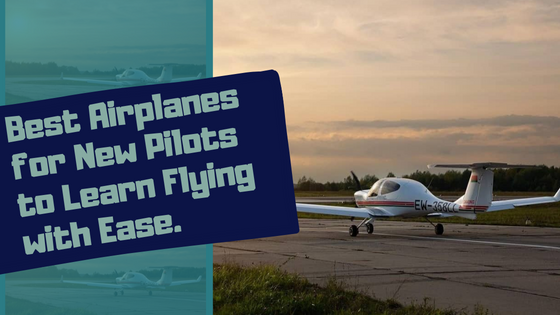Pilot books for beginners to get a heads up on flying and obtaining a PPL.
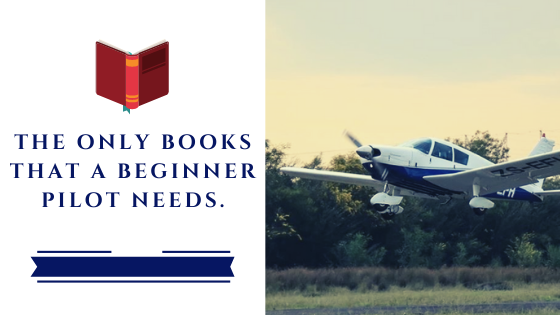
As beginners in aviation, most aspiring pilots are unaware of the books they can start reading before they get into flying.
There are plenty of books, but not all of them are as good as they are advertised. Some books have complex language for newbies.
Hence, I’ll help you find the books to begin your pilot journey and discuss why you need them.
First, understand how each book can help you get your private pilot license or give you an overview of flight training and aeronautics. Pilot books for beginners must:
- Give an introduction to aeronautics for newbies;
- Have easy, comprehensible language for everyone to enjoy;
- Prepare an aspiring pilot before the actual flight training begins;
- Be in a non-monotonous tone to excite the novice pilot about flying;
- Lastly, it said to obtain a private pilot license with ease.
Whether you are only beginning in aviation or are a student pilot, the books mentioned in this post will give you a strong foundation of aeronautical knowledge for your pilot training.
What are the pilot books for beginners?
I shared the top beginner pilot books to help you only with the private pilot licensing stage and not further.
Many websites share a list of books for beginner pilots or student pilots, but they rarely say why a book is essential for student pilots; instead, they talk about the book’s author and history.
I took a different approach than other websites that try to shove a list of books for beginner pilots into their throats. I decided to help you as much as possible by introducing the books and why pilots need them to excel in their new journey.
Private Pilot Handbook by Rod Machado.
Rod Machado is a veteran flight instructor famous for teaching in a comprehensible language. His ability to articulate information is second to none in the industry.
Introducing multiple brand-new subjects and aeronautical information is challenging for beginner pilots to grasp.
As a pilot, you must understand various topics for safe flight operations. Hence, exposure to numerous subjects in a short period is overwhelming.
I understand it’s crucial to have a book that explains everything in an easy language to have a strong foundation for pilot training. If your fundamental knowledge is poor, you’ll perform poorly during actual flights.
If you don’t perform well in an actual flight, you will endanger the safety of the aircraft and yourself.
What will you learn from Rod Machado’s Private Pilot handbook?
Rod Machado’s Private Pilot handbook is not only to give you theory knowledge to pass your exam. It’s a book that will help you forever grow as a pilot.
To become a private pilot and pilot in command of flights, you must ensure safety and avoid making silly mistakes.
How to avoid making a silly mistake and ensure flight safety depends on your fundamental knowledge of aeronautics and aeroplane operation.
Failure to act accordingly in an adverse situation will jeopardize flight safety.
People get bored quickly studying an entire book, but checking books for learning is essential. Rod Machado’s Private Pilot Handbook is humorous and keeps readers engaged. This book can make readers excited about flying.
This book is adequate to pass your FAA private pilot knowledge test.
It would be best to accumulate information on aeronautics and flight operations.
Rod Machado’s private pilot handbook is hundreds of pages with precise information and is fun to read.
RELATED: Private pilot license study materials.
Rod Machado’s private pilot handbook has at least two pictures or illustrations on each page to describe a topic transparently. The effort the author put into creating this book is visible.
The author’s teaching techniques and tips help beginner pilots remember new information to pass their PPL knowledge test.
Is this book essential for beginner pilots?
A book like this is essential for anyone intending to get a private pilot license. Even if you plan to start flying after a year, Rod Machados Private Pilot’s Handbook can give you a good heads-up on flight training and aeronautical subjects.
Studying a good book and clearly understanding topics boost a student’s confidence.
The Private Pilot Handbook by Rod Machado has more than what you require to pass the private pilot exam in the FAA.
Most student pilots begin their journey with the Jeppesen Private Pilot Handbook or the FAA’s Pilot’s Handbook of Aeronautical Knowledge (PHAK). These alternatives are great, but Jeppesen’s book is not enjoyable for any newbie.
Jeppesen’s books use a language that is not easy to understand. However, FAA’s PHAK is easy to read and understand without the depth of topics.
Rod Machado nailed everything in this book. It’s engaging and can keep the reader’s attention on the subject long. Regarding the depth of the topics, Rod Machado is never frugal.
“How to fly an airplane handbook” by Rod Machado.
For a beginner pilot willing to be good at flying an aeroplane, I suggest either of these two books:
- How to Fly an Airplane handbook by Rod Machado;
- Airplane flying handbook by FAA.
The airplane flying handbook by ASA has always been my favourite book for flight training. It’s an excellent book for learning the basic manoeuvres of aircraft.
However, I recommend beginners to buy The How to Fly an Airplane handbook by Rod Machado.
Both the books mentioned above are in intelligible language. However, Rod Machado’s book is very detailed, and that’s where it stands out from FAA’s book.
Extra details may be boring, but Rod Machado’s books are constantly engaging.
FAA’s airplane flying handbook is excellent and misses all the details for a competent pilot.
Nevertheless, I assume you are in this article because you are a beginner. New aspiring pilots are in no rush to manoeuvre the next day. Thus, I recommend reading Rod’s How to Fly an Airplane handbook for extra depth and preparing for pilot training ahead of time.
What will you learn from the How to fly an airplane handbook?
Rod Machado explained all the manoeuvres in detail:
- What to do for a particular plot and why to do that;
- How the aeroplane will react when a student pilot does something wrong;
- How a student must respond if his input is not correct.
- Why an aircraft reacts in different manners;
- Which manoeuvre is suitable for tricky situations?
Similarly, Rod Machado includes illustrations for beginners to clearly explain how the aeroplane will behave and why it will behave like that.
You may wonder how reading books can help with actual flying. Indeed, it does.
Once you read books, you absorb many lessons, and during flight training, you naturally remember the things you learned from your book and apply them. You don’t have to remember word by word from the books, but implementing little things you know every time makes a significant difference.
Rod Machado went into in-depth details about the aircraft, how the airplane reacts, and why it does that. On the contrary, the FAA’s airplane flying handbook explains what a student pilot needs to do to control the plane.
I used FAA’s airplane flying handbook to understand how the plane behaves, and as I was already taking my flying lessons, I didn’t have much spare time.
I was in a hurry to understand aeroplane flying and acquire on-point information. I had to learn quickly and apply the knowledge on my flight the next day.
Assuming you haven’t begun your pilot training yet, you can relax and read the book by Rod Machado on becoming a competent pilot.
It would be best if you were ready with additional flight training knowledge. You would impress your flight instructor and progress quickly towards your goals.
Are these books essential for beginner pilots?
Neither of these books will help you with theories or passing the FAA knowledge test. But these books prepare students for their check ride.
It’s common for student pilots to repeat the same mistake on the flight. Often, students repeat the errors because they don’t understand what input on the aircraft controls alters the output result.
Or what made the airplane behave in a specific way. It would be best if you controlled the plane, and the aeroplane must not direct you. The aircraft always behaves the way you want it to behave.
These books discuss all these factors, and you can purchase either depending on the study time you dedicate.
Read these books, implement the techniques, and you will learn to operate an aeroplane smoothly in no time.
I had difficulty landing the airplane, and studying using the airplane flying handbook helped me quickly get my first solo.
Before you begin flight training, investing in a book will save you money and time.
Gleim’s private pilot test prep book for beginner pilots.
This book is not essential, but this knowledge test prep is excellent for revising matters you learned from the previous books.
The Gleim’s test prep book is not a pilot book for beginners, yet I include it because it would help beginners practice things they learned.
This book contains multiple-choice questions and answers describing why each option is correct, and others are wrong.
This test prep prepares student pilots for the FAA private pilot knowledge test.
What will you learn from Gleim’s Private pilot test prep?
To obtain a private pilot license, you must pass your FAA private pilot knowledge test to get a private pilot license. In my opinion, Gleim’s private pilot test prep is the best to prepare for the FAA PPL knowledge test.
Nevertheless, don’t buy this book before purchasing the Private Pilot Handbook by Rod Machado. You need minimum aeronautical knowledge to understand this book’s questions and answers.
Using this book and reading the description for the answer is an excellent technique to remember aeronautical topics forever.
There is also a great alternative to this book by Rod Machado.
Rod Machado created an eWorkbook. The book is only available in PDF and is inexpensive to find gaps in your aeronautical knowledge. Using this eWorkbook you’ll learn which topics you missed and where you need more studying.
You can check out the book here.
RELATED: Private pilot test preps.
Pilot Weather: From Solo to the Airlines.
It’s not the essential pilot book for beginners, but it’s a must-have for any pilot’s library.
Weather can be unpredictable, altering flight routes and hindering pilot decision-making. Weather is a significant factor in flying and contributes to many aeroplane crashes.
Nevertheless, an intelligent aviator knows how to keep and land the aircraft safely regardless of the weather.
Pilots must understand the weather and know when to avoid it.
Meteorology is an enjoyable subject, and the space is vast. Learning about different weather phenomena and their dangers requires time and patience.
Fortunately, Doug Morris, the author of Pilot Weather, wrote this book keeping pilots in mind.
What will you learn from Pilot Weather?
He discussed topics that are relevant to pilots and flying in adverse weather. After reading this book, you will be more confident in operating aircraft. Sure, you’ll know which day is unsuitable for surfing the sky.
You’ll learn to control your ego and not jeopardize flight safety in weather conditions.
Is this book essential for beginner pilots?
Pilot weather is a must-read for any pilot at any stage of their training or career.
As a CFI and a meteorologist, Doug Morris knows what a pilot needs to know and what is unnecessary to discuss regarding the weather.
If you are a beginner pilot and have a busy life, get your hands on this book, which will be your lifelong companion for reference.
An excellent alternative to pilot weather is Weather Flying by Robert N. Buck.
Weather Flying is more like an entry-level book for Pilots. It’s not very detailed and relevant to modern-day aircraft operations.
In this book, you will learn What kind of weather to avoid and what weather to expect en route.
This book is a novel by two pilots sharing their weather-flying experiences. The book is challenging, as there are no pictures or illustrations. For beginner pilots, reading this book can be tedious.
Weather Flying talks about how to fly through challenging weather conditions. However, the author’s experience is in the United States, and this book is relevant for pilots that operate in the USA.
Pilot weather is more enjoyable for newbies to read as it has many diagrams and images. On the other hand, weather Flying can be a monotonous read.
Stick and Rudder by Wolfgang Langewiesche.
People say this book is the Bible of aeroplanes flying. As the name suggests, this book teaches The art of flying.
This book is not only meant for pilots but also aviators. Can you see the difference?
Aviators are the ones who love going back to the sky again and again to experience new challenges because that’s what they love.
So, as a beginner pilot, you will not lose anything by investing in this book. Buy this book once, and keep it forever.
Although many things in the book seem irrelevant in this age, you will know nothing is irrelevant while controlling the aircraft.
For student pilots, it’s a must-have.
It explains everything about flying an airplane and knowing how and why an aircraft responds to your input. Rod Machado’s “How to Fly an Airplane Handbook” is similar to Stick and Rudder’s, but Rod Machado wrote his book elaborately with his twist.
You will also learn what you must not do while controlling the aeroplane and why it is best to avoid doing so.
Student pilots need this book to become better at flying.
Beginner pilots, regardless of their intentions:
- Whether to start flight training,
- Learning to fly an aeroplane;
- To improve their flying skills;
This book can help beginner pilots of fixed-wing airplanes or helicopter student pilots. Get this book early in your flight training, and you will not regret it.
You can visit PilotMall.com using this link and get a 5 USD off coupon to order Stick & Rudder.
Plane Talk.
Lastly, I want to mention Plane Talk by Rod Machado. It’s not a pilot book for beginners but a must-have for pilots.
Beginner pilots may find this book quite entertaining initially to read. Rod Machado’s humorous teaching style is fun to read.
Hence, if beginners want to expand their horizons and get their hands on more valuable stuff, they must get Plane Talk for their library.
This book is a hidden gem. Few pilots talk about this book because perhaps not everyone knows about it.
It’s available only in PDF; you can read it using any smart device.
This book contains stories from Rod Machado’s nearly five decades of experience in the aviation industry.
Indeed, there are numerous things you can learn from an experienced pilot. Have a peek at aviation and flying through the eyes of a well-experienced pilot.
This book will give you insights into how the aviation industry works and how you can become a proficient pilot.
The Plane Talk discusses pilot decision-making and how you can operate safe flights even on stressful days.
It’s not a must-read, but beginner pilots would get entertaining insights into aviation by reading this book.
Are you going back to flying after a long time? With numerous resources available online, it’s easy to get confused. It’s time to prepare for the renewal, and you don’t know where to begin.
You can have your hands on all the aviation books in this world and figure it’s impossible to study them before your PPL renewal. Or you can be wise and pick a few selected textbooks.
I shared the preferred books I keep in my digital library, and you can find the accessible versions of a couple of these books on FAA’s website.
So, which books do you think I should recommend?
Let me tell you this: each pilot has their favorite instructor and publisher of books. No matter which book you buy, if you need books for private pilot license renewal or refresher, you need more than one book for different purposes.
I listed books in three categories to serve different purposes and get you back in the sky without delays:
- Books to refresh your aeronautical knowledge;
- To revise your flight operational skills, I would need another book;
- Lastly, a book to sharpen my communication skills;
- Finally, I would keep a FAR/AIM book handy to aid my regulation memory.
Study one book from each category, and you will be ready to be a pilot in command.
Which books can refresh your aeronautical knowledge?
Jeppesen is a pioneer in publishing aviation books. When I started pilot training, my flight school recommended Jeppesen’s private pilot manual. Jeppesen’s books are undoubtedly colourful, with many images and illustrations.
However, aspiring pilots find Jeppesen’s books overwhelming. Similarly, many student pilots don’t have the time to read much information. Learning only the essential information for the private pilot stage is better.
As you progress in your flight training.
Jeppesen’s Private Pilot Manual is an excellent book if you have plenty of time to prepare for your private pilot license refresher. If you are a private pilot and want to study something to refresh your knowledge, then looking at the Jeppesen private pilot manual can fulfil your needs.
On the contrary, I would pick Rod Machado Private Pilot Handbook if I want to study one book and have all the information in one place in an easy-to-understand language. The book is available in both pdf and textbook versions.
Rod Machado’s books are fun to read, with many crucial facts. Rod Machado is renowned for explaining things in ways that student pilots never forget once they read.
It’s not about what you studied, but remembering essential cases at the right time is crucial. Rod Machado’s explanation is for pilots to remember all the facts forever.
If you read many books and can’t utilize the knowledge in real life, this knowledge is not practical.
Rod Machado explains things with examples, tips, and techniques for student pilots never to forget a subject. Even if I memorized an entire book and can’t remember the different types of Airspace, what benefit would learning a whole book do for me?
It’s you who need to identify which subjects are essential for you. Or issues on which you need more clarification.
Rod Machado’s private pilot handbook has a table of contents to find the subject you need more practice on and then continue reading from there.
Aeronautical knowledge books are lengthy with many texts, and you don’t need all the information during a flight. The subjects are in the book because knowing about safe flight operations is good.
If you are unwilling to study either of the books I mentioned above, you can choose this last book by ASA, commonly known as PHAK.
FAA recommends the pilot’s Handbook of Aeronautical Knowledge, and you can have a PDF version of the book for free by clicking here.
ASA’s PHAK is not a heavy book but has all the necessary information to become a safe pilot.
During your advanced flight training, you may need more information. ASA’s PHAK is like a summarized version of other books. It is a compact version of all the facts you need to know to be a private pilot. Now, ask yourself why you need a book.
If you are a current private pilot and want to refresh your fundamental aeronautical knowledge, buy Rod Machado’s Private Pilot Handbook.
If you have limited time to study and renew your private pilot license, the ASA’s PHAK can do the job for you.
Which books improve your fundamental flying skills?
Before returning to flying after a break, look at one of the books I mentioned below. These books are essential whether you are coming to pass after decades or a current pilot who wants to refresh your practical aircraft operating skills.
- How to fly an Airplane handbook by Rod Machado;
- Airplane flying handbook by ASA.
In the past, you were probably an excellent VFR pilot. But no matter how good you are at flying, without practice, you will struggle. Similarly, an intelligent pilot is always learning.
So these books suit anyone who wants to improve their flying skills.
But do you need to study both of these books? Sometimes, less is more. If you have the time, you can explore both, but if you want to become a better pilot, then study one book at a time and apply the lessons in actual flight training.
You may wonder how reading a book can improve actual flying.
Honestly, it does help because you absorb knowledge from the book, and during the experience, your brain automatically reloads what you must do.
You read books about how to perform a manoeuvre correctly and stabilize your aircraft to maintain a straight and level flight in detail. The details in the books are often better than how a flight instructor explains inside the cockpit.
Many pilots struggle to land the aircraft smoothly because amateur pilots don’t understand a smooth touchdown depends on a good approach entry. Thus, the landing phase for a pilot begins downwind when the pilot enters the traffic altitude.
Landing the aircraft is like a chain reaction. A minor error at the base will make your touchdown bumpy.
If you read the airplane flying handbook I listed, you will know many other details about operating and manoeuvring an aircraft as a pilot in command.
There is a popular book about learning how to fly an airplane:
Stick & Rudder flying teaches pilots to operate an aircraft without exceeding the limits. This book explains the fundamentals of aviation and the matters a pilot must learn to manage the plane safely.
However, this book was published long ago, and a lot has changed today in aviation. Thus, this book seems irrelevant in many aspects of flying today. Therefore, I mentioned the two other books:
- How to fly an Airplane handbook;
- Airplane flying handbook
These two books are relevant to studying the fundamentals of flying and becoming a better airman.
Which books should you study to improve your private pilot communication skills?
As a private pilot, you don’t need to read any particular book for communication skills. Aviation communication is mostly about practice.
The more often you aviate and communicate, the more confident you become; over time, communication becomes second nature during flight.
However, you must be ready for congested Airspace. You can’t waste any time in a busy airport in B airspace.
Bad communication during a flight can become fatal when approaching a busy airport.
A current pilot who doesn’t fly often may also forget proper communication. Similarly, a pilot returning to aviation after years is entirely out of practice. Without practice, this pilot will fail to respond appropriately to other traffic in the area. Responding on time during a flight is crucial. A delay in responding can lead to a fatal crash in the sky.
You don’t want to be that pilot who gets stuck during the flight. It is embarrassing, and the worst, it can be the reason for your crash.
So, how do you refresh your aviation communication skills?
As a private pilot, aviation communication is not so difficult. There are plenty of books available online—both paid and free versions. You can grasp basic communication techniques after reading a book for an hour.
There are also many YouTube tutorials available on the subject. By reading a book like this, VFR Communication for Idiots, you can be ready for your first flight after decades.
Communication for VFR flight is straightforward. IFR flight communication is more challenging, but that’s a subject for a different post.
Also, you can go to amazon.com and purchase a book to improve your communication tricks for the private pilot stage.
Lastly, have a FAR/AIM at your disposal.
You can access the latest FAR/AIM from the FAA’s website or purchase a physical copy online or offline.
To refresh your aviation regulation proficiency and maintain airspace safety. A pilot must keep the FAR/AIM book handy during the flight. It is tricky to remember every federal aviation regulation, so having the book and referring to it now and then is essential.
After years, a private pilot returning to the flight can go through the book and use this book for a private pilot license refresher.
To continue flying as a proficient private pilot, having a FAR/AIM book is essential.
